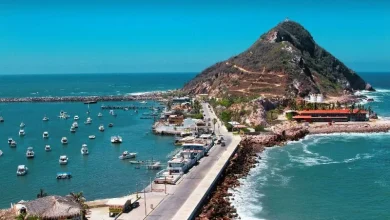The Role of Red Macroalgae in Marine Ecosystems

From the depths of our oceans, the vibrant world of marine life is sustained and woven together by a multitude of organisms. Each of these plays a crucial role in the balance and vitality of these priceless ecosystems.
Among these, red macroalgae stand out as unsung heroes. They contribute to the health of aquatic environments in ways both seen and unseen.
Understanding the significance of red macroalgae in marine ecology is not just for the marine biologist or the avid diver. It is an endeavor for anyone who cherishes the magnificence of our oceans and the life they sustain.
In this deep dive into the world of macroalgae. So take some time to read onwards!
Table of Contents
Primary Production
In the vast expanse of our oceans, primary production is what forms the basis of all life. It refers to the process by which organisms convert sunlight and nutrients into energy through photosynthesis.
This energy then fuels their growth and reproduction. This makes it an essential component for maintaining healthy marine ecosystems.
Red macroalgae are a key player in this process. This is because they are highly efficient primary producers. They have specialized pigments that enable them to absorb light at different depths in the ocean. This allows them to thrive even in low-light conditions.
Moreover, it makes them a vital source of energy for other marine organisms, such as fish and crustaceans.
Habitat Formation
Red macroalgae also play a critical role in providing shelter and habitat for a diverse array of marine species. Their flexible, branching structures create intricate habitats that serve as nurseries and feeding grounds for:
- fish
- crabs
- snails
It also includes other small organisms. Furthermore, the presence of red macroalgae can prevent erosion. They work by acting as a natural barrier and stabilizing sediment on the ocean floor.
This is especially important in areas where coral reefs have been damaged or destroyed. This is because red macroalgae can fill the gap and provide a new habitat for reef fish.
Biodiversity Support
Red macroalgae also contribute significantly to the biodiversity of marine ecosystems. They provide food for a wide range of organisms. This can include microscopic plankton to larger predators like sea turtles and whales.
Moreover, their presence can enhance the overall diversity of species in an area. This creates a more robust and resilient ecosystem. Red macroalgae can also act as indicators of environmental health, with changes in their abundance or distribution. Thus, reflecting changes in water quality and other ecological factors.
Food Source
Red macroalgae are also a vital source of food for humans. In many cultures around the world, they are consumed as a nutritious component of traditional dishes. They have been used for centuries in Asian cuisine.
Furthermore, red macroalgae are rich in:
- vitamins
- minerals
- antioxidants
They have even been researched for potential health benefits. This includes reducing inflammation and aiding in digestion. When talking about live foods, red macroalgae are also an essential source of nutrition for reef aquariums. This is because they provide vital nutrients and can help maintain a balanced ecosystem.
Nutrient Cycling
Red macroalgae play a crucial role in nutrient cycling within marine ecosystems. As they grow and die, they release nutrients such as nitrogen and phosphorus back into the water. This can then be absorbed by other organisms.
This cycle is essential for maintaining a healthy balance of nutrients in the ocean and ensuring the continued growth of marine life. Moreover, red macroalgae can absorb excess nutrients, helping to prevent harmful algal blooms and other imbalances in the ecosystem.
Oxygen Production
In addition to nutrient cycling, red macroalgae also contribute to oxygen production in the ocean. Through photosynthesis, they release large amounts of oxygen into the water, helping to maintain high levels of dissolved oxygen that are essential for the survival of marine organisms.
Without red macroalgae and other primary producers, our oceans would have much lower levels of oxygen, making it difficult for marine life to survive and thrive. Therefore, their role in oxygen production is crucial for maintaining the health of our oceans.
If you are working on an aquarium design, don’t forget to consider including red macroalgae in your underwater world. Oxygen production is a critical component of maintaining a balanced and healthy aquarium environment, and red macroalgae can play a significant role in this process. You can click for macroalgae species recommendations and more information on how to care for them in your aquarium.
Carbon Sequestration
Rd macroalgae also play a role in mitigating the effects of climate change through carbon sequestration. As they absorb carbon dioxide from the water for photosynthesis, they help to reduce the amount of this greenhouse gas in our oceans and atmosphere.
Moreover, when red macroalgae die and sink to the ocean floor, they can store this carbon for long periods, preventing it from being released back into the environment. This makes them an essential player in the global carbon cycle and highlights their significance in marine ecology.
Erosion Control
In addition to providing habitat and preventing erosion, red macroalgae can also help to control erosion in other ways. For example, they can be used in coastal restoration projects to create vegetated areas that act as natural buffers against wave action and storm surges.
This not only benefits the surrounding marine life but also helps to protect coastlines from erosion and damage caused by severe weather events. The use of red macroalgae in these projects showcases their versatility and value in supporting coastal ecosystems.
Understand the Role of Red Macroalgae
The role of red macroalgae in marine ecology is far-reaching and essential. From primary production to habitat formation, nutrient cycling to medicinal uses, these unsung heroes play a crucial role in sustaining our oceans and the life they support.
We must continue to understand and protect red macroalgae and their fragile ecosystems to maintain the balance and health of our oceans for generations to come.
So next time you catch a glimpse of these beautiful organisms in the sea, remember their vital role and value in maintaining the vibrancy of marine life.
Visit our blog for more articles like this. We have more!




